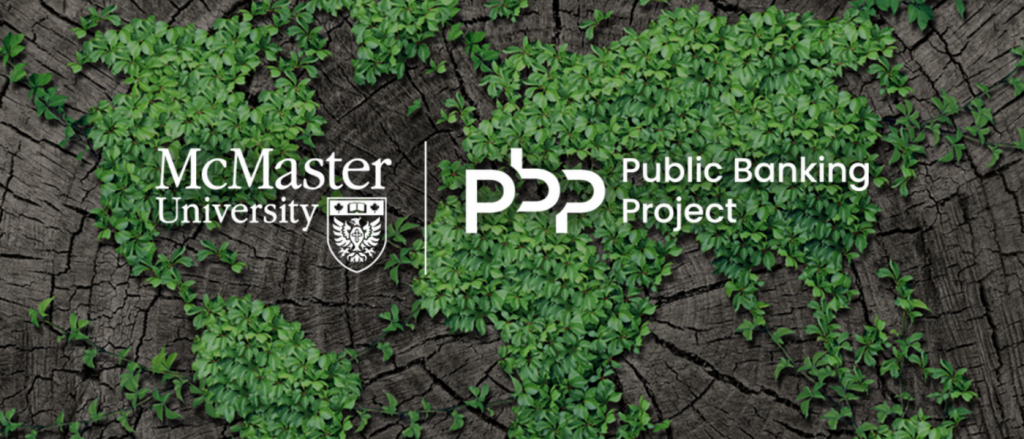Public Banking Project

About the Public Banking Project
The Public Banking Project is a groundbreaking initiative at McMaster University, dedicated to exploring the role of public banks in achieving sustainable development financing and just global transitions.
Our mission is to advance pro-public alternatives by ensuring public banks contribute to inclusive and prosperous communities.
Pioneering Public Banking Research
We generate cutting-edge public banking research and evidence-informed policy advice, and train the next generation of public banking scholars. Our diverse team spans political economy, development studies, politics, economics, finance, geography, business, sociology, and sustainability, working together to foster financial inclusion and economic justice.
Building on over a decade of research, the Public Banking Project is the world’s leading hub for public banking research. Join us in advancing public banks for a green, just, and inclusive society.
Our Core Objectives
Understanding Public Banks' Capacities
Developing in-depth, theoretically informed, and empirically rich understandings of public banks’ capacities.
Fostering Collaboration
Enhancing collaboration between public banking scholars, policymakers, practitioners, and communities to foster financial inclusion.
Training Future Scholars
Training the next generation of public banking scholars in the field of social sciences research.
Latest Research Initiatives

Public-Public Collaborations for Green and Just Transitions (2024)
This project advances research and policy action on public-public collaborations, focusing on partnerships among public banks, public services, and community organizations. The goal is to finance green and just transitions at the necessary pace, scale, and terms for equitable sustainable development.
Through fostering financial inclusion and economic justice, this initiative aims to support the UN 2030 Sustainable Development Goals through innovative public banking research.

Public Banks + Public Water (2021-2025)
Advancing theoretical and empirical knowledge, this initiative assesses and documents the diverse experiences of public banks financing public water operators. It aims to identify best practices in public bank and public water collaboration to support equity-oriented water services, assisting in policy development and implementation for improved financing.
By strengthening the interface between the public banking and public water sectors, the project facilitates knowledge sharing to bridge these research and policy arenas. Additionally, it trains and mentors students, emerging scholars, and practitioners to build capacity for policy-relevant interdisciplinary research.

Towards a New Financial Architecture: National Development Banks’ Potential to Boost SDG Investment with MDB Support (2024)
This study researches and describes the interfaces between national development banks (NDBs) and multilateral development banks (MDBs) across five continents. Focusing on NDBs, the research aims to understand the limitations affecting public development banks’ capacities to enhance the volume and quality of sustainable development financing from MDBs.
The project contributes research inputs for the annual global Finance in Common Summit of public development banks, supporting the UN 2030 Sustainable Development Goals.

Public Development Banks and SME Sustainability (2023-2024)
This project conducts a comprehensive literature review to propose future research guidelines on sustainable financing by public development banks for micro-, small-, and medium-sized enterprises (SMEs).
By focusing on the role of public banks in supporting SME sustainability, the initiative aims to enhance financial inclusion and economic justice, contributing to the UN 2030 Sustainable Development Goals.
